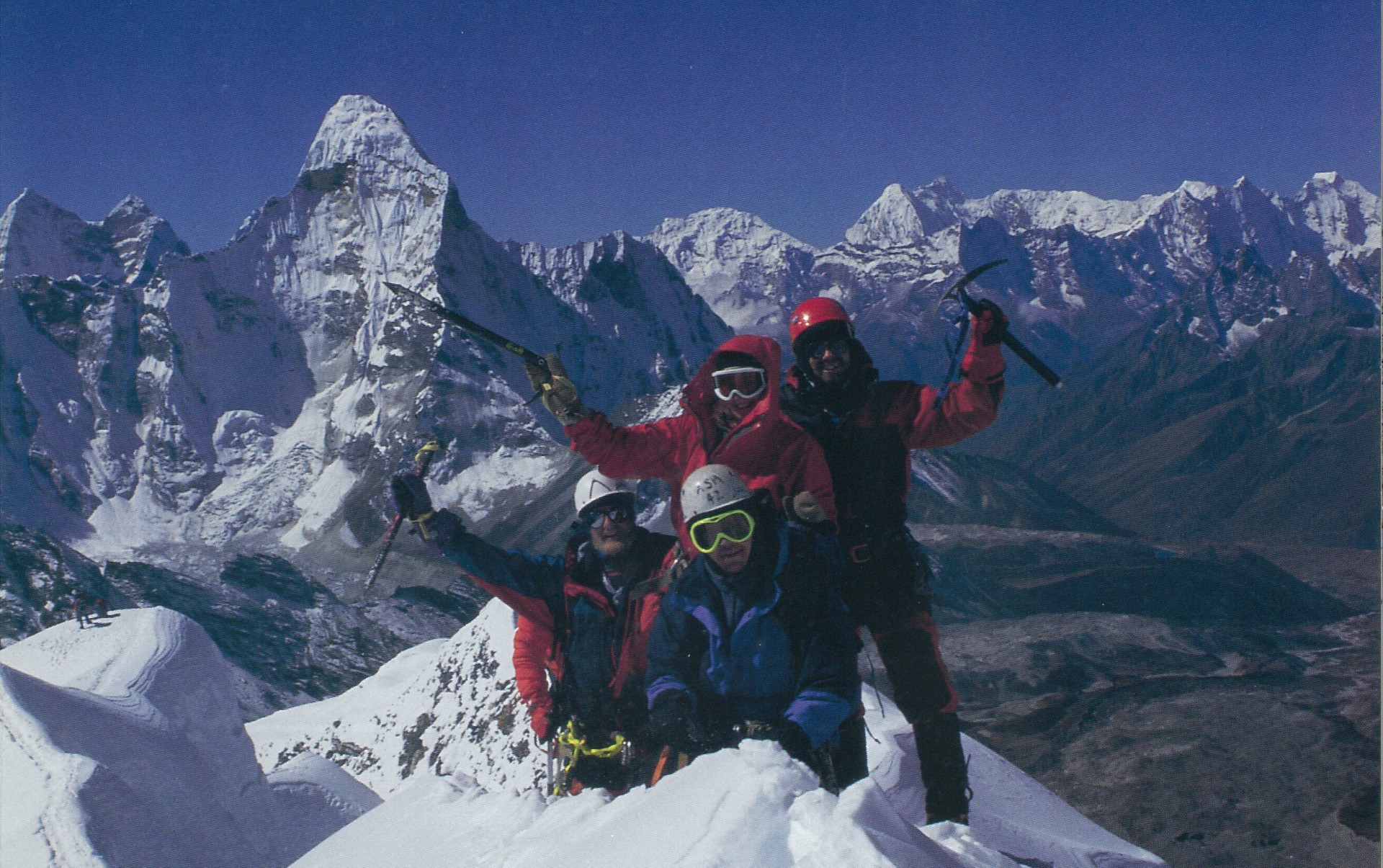In the mid-eighties, Rockcraft developed and expanded its services to provide a more comprehensive range of mountain based adventures and skills training courses. This growth resulted in a name change that would better reflect the team’s broader scope, thus the Australian School of Mountaineering (ASM) was launched. ASM’s growth saw it expand to deliver the following products and services:
- Training for instructors and leaders in abseiling, rock climbing, canyoning and rescue.
- All levels of recreational abseiling, rock climbing and mountaineering instruction for groups and individuals.
- A guiding service for groups and individuals seeking to participate in abseiling, rock climbing, canyoning and mountaineering tours.
- Specialist training in bush survival and navigation.
- Experience-based training in teamwork and leadership.
- Film and television location and production work involving wilderness and outdoor content.
- Promotional and special events projects for corporate clients including product and service media launches and
- Retail supply of outdoor products and clothing including specialist bushwalking, mountaineering and rock climbing equipment.
Whilst historically the core activity for ASM was locally based guiding and technical skills training, our participants were always asking for ASM to take them to a new level. “So where to now?” remains a frequent post course enquiry.
Due to their near proximity, the Southern Alps of New Zealand were a logical choice for ASM to offer fledgling alpinists an opportunity to spread their wings. Utilising our International Federation Mountain Guiding Association certified guides and those of our New Zealand based associates, ASM commenced many seasons of successful guided ascents and advanced technical courses in the very challenging mountains of both Mount Aspiring and Mount Cook National Parks.
In the Summer Season of 1989 ASM Operations Director Glen Nash organised and led the first successful Australian guided group expedition to Mt Aconcagua in the Argentinian Andes, which at 6,960.8 m (22,837 ft) is the highest mountain in South America. ASM later went on to guide multiple successful expeditions to this famous member of the “Seven Summits”.
In 1992 ASM Climbing Director Derek Murphy engaged in an enlightening discussion with renowned mountaineer Doug Scott and his visionary, multi-summit Himalayan ascent concept. Totally inspired, Derek commenced several months of planning and organising for the world’s first professionally guided multi-peak Himalayan Expedition; Imjatse / Island Peak (6189m / 20,305ft), Pokalde (5806m / 19,049ft) and Lobuche East (6119m / 20,070ft) the most sought-after trekking summits in the Khumbu Himalaya. Though the demand was unprecedented, the desire remained to keep the project “small”, still 27 trekkers, climbers and guides organised in multiple teams met up in Kathmandu in the post monsoon season of 1993. Supervised and mentored by Senior Guides from ASM and supported by a team of experienced Sherpas and local porters, the climbers achieved a combined total of 58 successful summit climbs! The ASM Himalayan 3 Peaks Expedition of 1993 went on to become what was widely regarded as the most successful guided multi-peak Himalayan Expedition of its time! In 1996 and 1997 Senior ASM Guide Adam Darragh led two additional successful Himalayan Three Peaks Expeditions. In 1994 Derek again repeated the ASM multi-summit experience by leading a most successful South American expedition, with 14 members, in the Peruvian Andes. The peaks climbed were Nevado Pisco 5752m (18,871ft), Ishinka 5530m (18,140ft) and Urus 5423m (17,792ft).
Other international destinations where ASM guides and instructors have travelled to conduct training and perform technical consultancy tasks have included Indonesia, New Guinea, New Britain, Europe and the USA.
In 2017, ASM expanded its services to Sydney where its Take It Outside program was born! This program not only offered Sydney climbers easy access to ASM courses, it also provided qualified and experienced Sydney-based instructors the opportunity to educate and develop climbers in the heart of their very own community.

